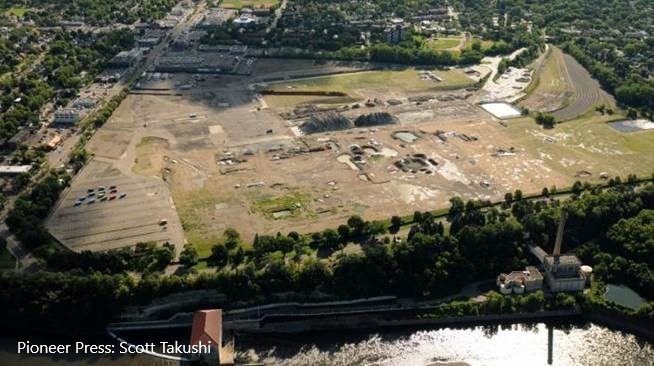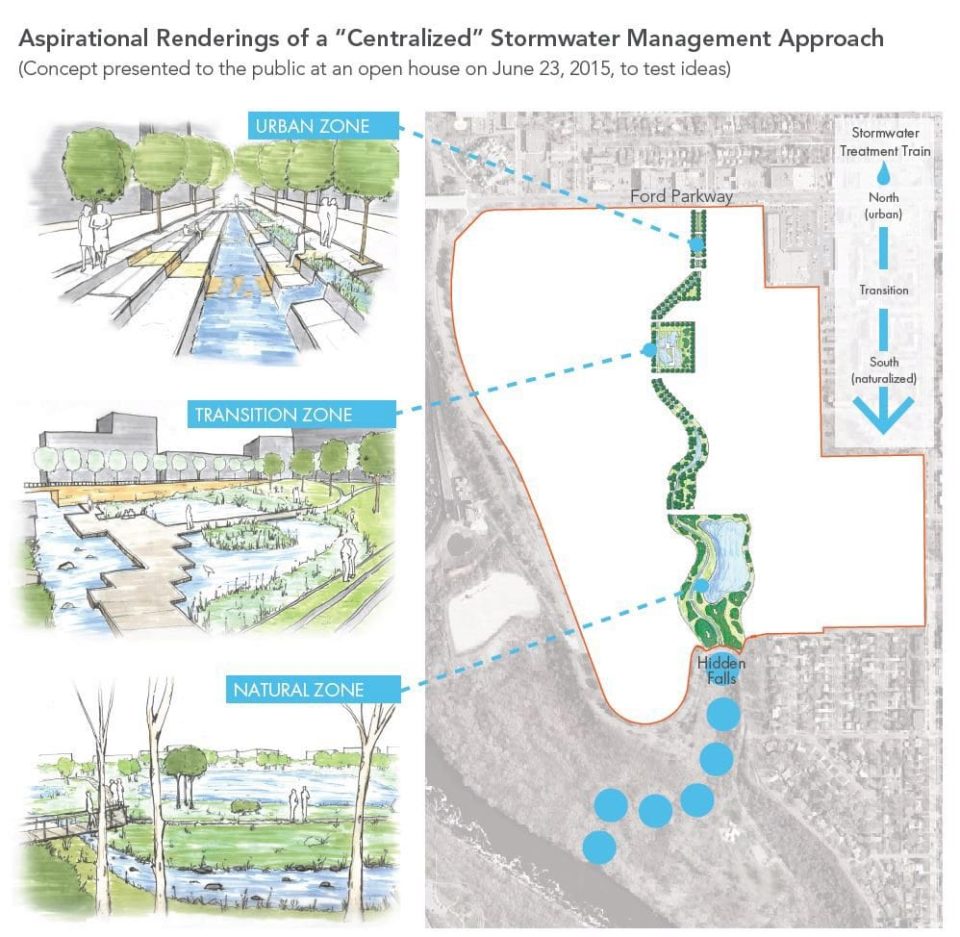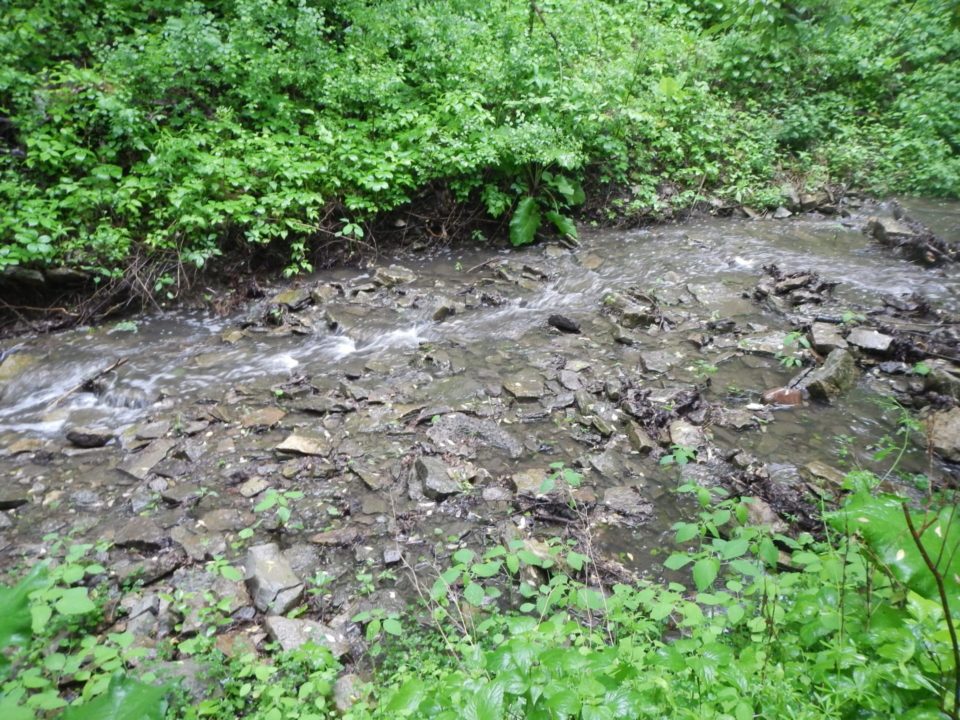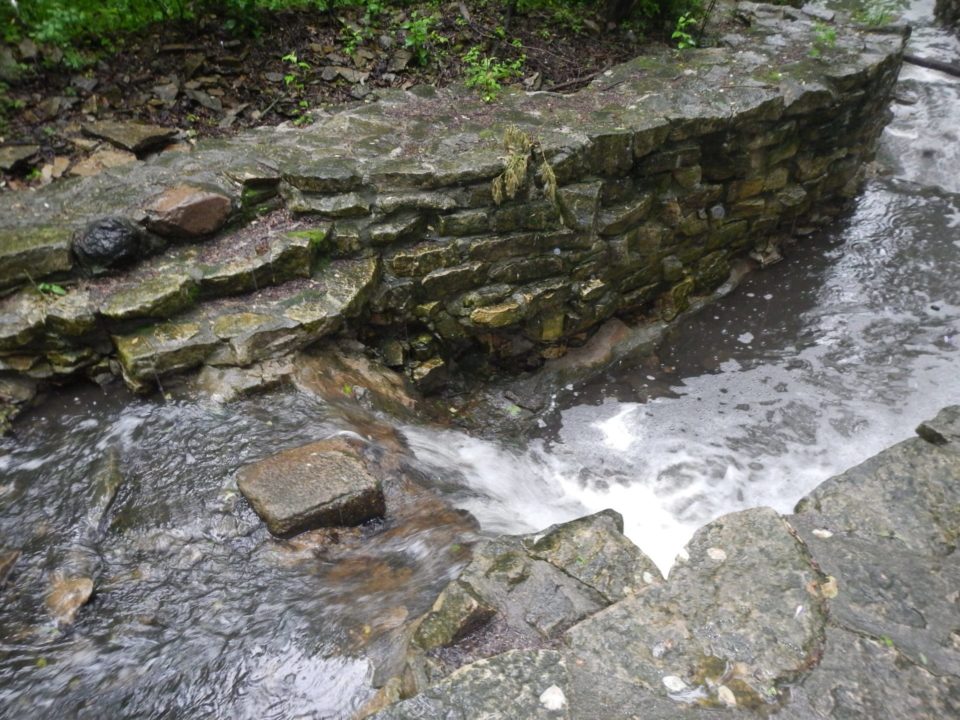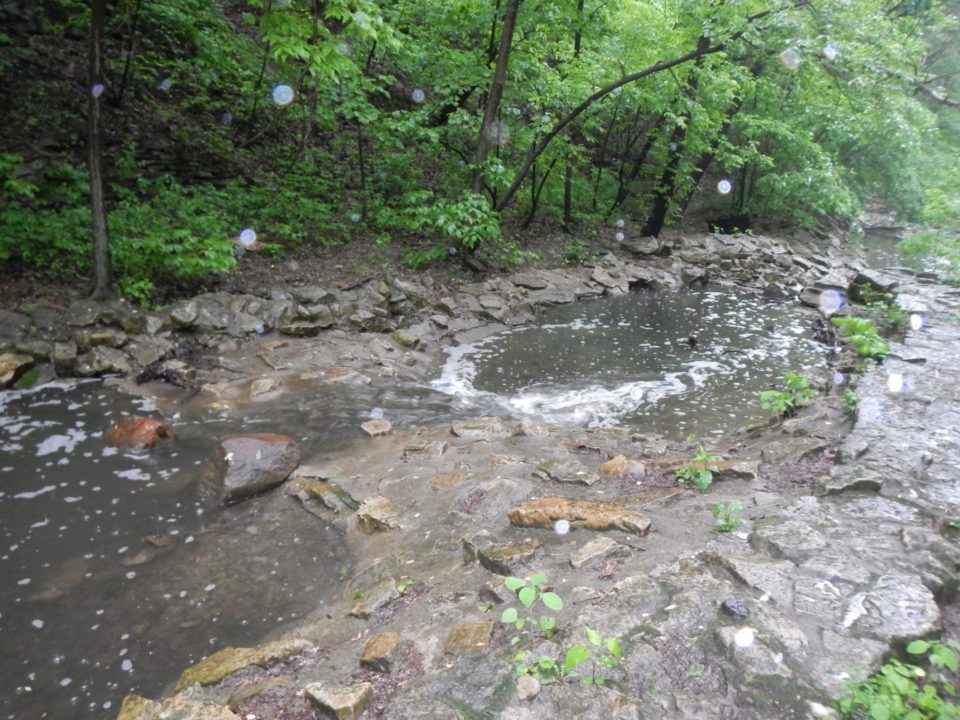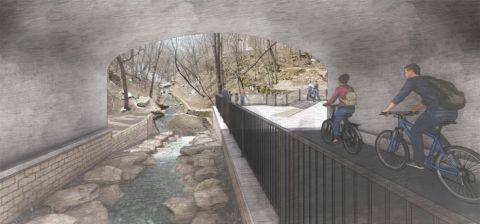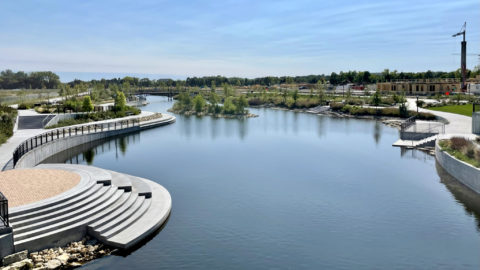Redeveloping the 122-acre site of the Ford Assembly Plant in Saint Paul started with careful planning. The City of Saint Paul and partners like Capitol Region Watershed District (CRWD) worked to build a framework for a new neighborhood with designs for stormwater management, energy, buildings and infrastructure.
Now open, the Highland Bridge community is a beautiful landmark atop a once-industrial stretch of our precious Mississippi River bluffs. Treated stormwater fills the central water feature, flowing to the re-imagined Hidden Falls Creek before emerging at the new Mississippi Boulevard Crossing and tumbling over its namesake falls and ending at the Mississippi River. The water is surrounded by paths, rain gardens, and inviting stretches of nature. It all started with a vision for an innovative, centralized approach to stormwater management.

